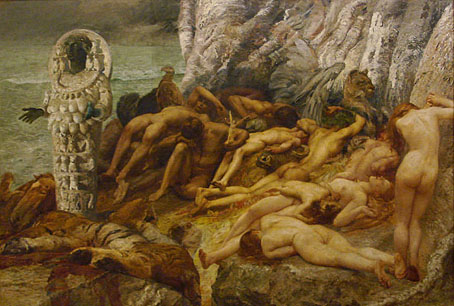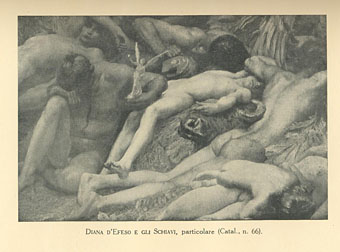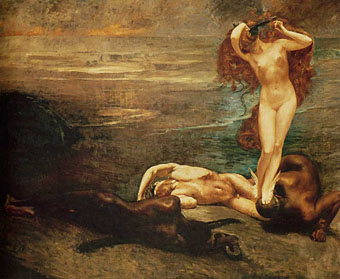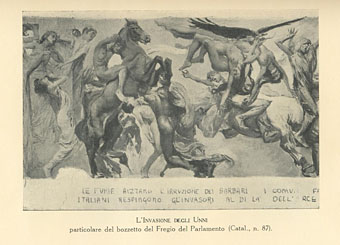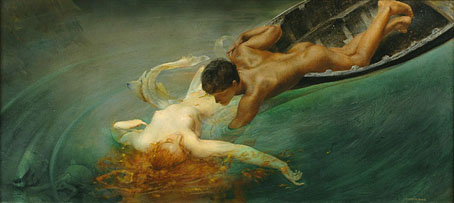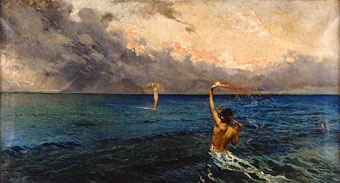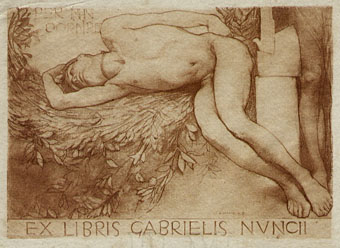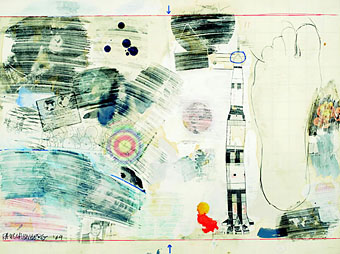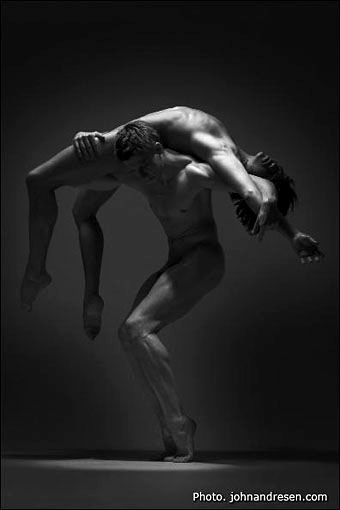Oddest Book Title of the Year shortlist announced.
Seaweed, Shopping Carts and the Spoon Boxes of Daghestan.
The art of Giulio Aristide Sartorio, 1860–1932
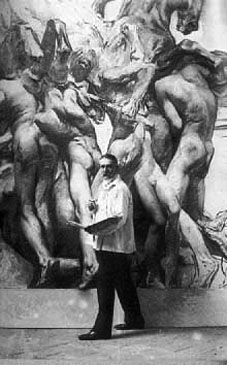
Giulio Aristide Sartorio is generally counted as one of the Italian Symbolists, along with painters such as Giovanni Segantini. He’s also one of the few notable artists of the period to have worked as a film director.
I’ve been fascinated by the curiously erotic academic style of Sartorio’s early work for years but these paintings rarely appear in books (although there have been a couple of monographs) and there’s little decent attention given to him on the web. Philippe Jullian in his essential guide to Symbolism, Dreamers of Decadence (Pall Mall Press, 1971), describes his work as being “vast paintings… full of handsome warriors who are always naked and generally dead.” Gabriele D’Annunzio, who knew heroic camp when he saw it, became a fan when the pair met in Rome in the 1880s. Sartorio illustrated D’Annunzio’s Isaotta Guttadàuro in 1886 and they continued to collaborate into the 1920s. One possible reason for Sartorio’s falling out of favour may have been later association with Mussolini’s Fascists, something else he shared with D’Annunzio.
Diana of Ephesus and the Slaves (1893–98).
Much as I’d like to point you to a large reproduction of the bizarre Diana of Ephesus and the Slaves, there doesn’t seem to be one around just now. However, you can see a few gallery pages of Sartorio’s work here if you don’t mind the copyright label spoiling everything.
Update: A reasonable copy of the Diana painting has turned up. Click the image above.
Diana of Ephesus and the Slaves (detail).
Gorgon and the Heroes (1895–99).
L’Invasione degli Unni (no date).
Siren or The Green Abyss (1900).
Pico, roi du Latium, et Circé de Thessalie (1904).
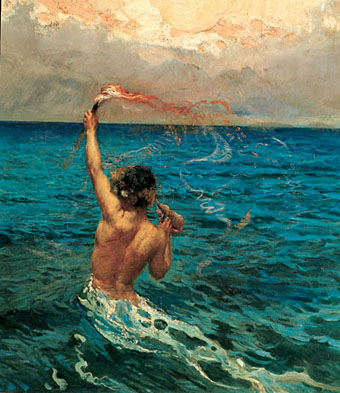
Pico, roi du Latium (detail).
Ex libris Gabrielis Nuncii “per non dormire” (1906).
Elsewhere on { feuilleton }
• The gay artists archive
Previously on { feuilleton }
• Angels 4: Fallen angels
Google’s book plans
Google’s book plans.
“We are talking about a universal digital library.”
Transfer drawings by Robert Rauschenberg
No title (1969).
Robert Rauschenberg–Transfer Drawings of the 1960s
Jonathan O’Hara Gallery
41 East 57th Street, Suite 1302, New York, NY 10022
February 8th–March 17th 2007
The transfer technique, which he took up in 1958, had remarkably few moving parts. It involved soaking newspaper or magazine clippings in solvent, laying them face down on drawing paper and then hatching back and forth across them with a dry pen nib. The results dazzle; in a flickering, almost strobelike effect, images seem to rise to the surface like memories through a scrim—or through the static of a television set. The critic Lawrence Alloway likened the fluctuating motifs to “a postcard stand in a windstorm.”
A Rarely Seen Side of a Rauschenberg Shift.
Previously on { feuilleton }
• Jasper Johns
Dancers by John Andresen
Andreas and Paulo photographed by John Andresen.
Previously on { feuilleton }
• Youssef Nabil
• Images of Nijinsky
• The art of Hubert Stowitts, 1892–1953
• John Andresen

